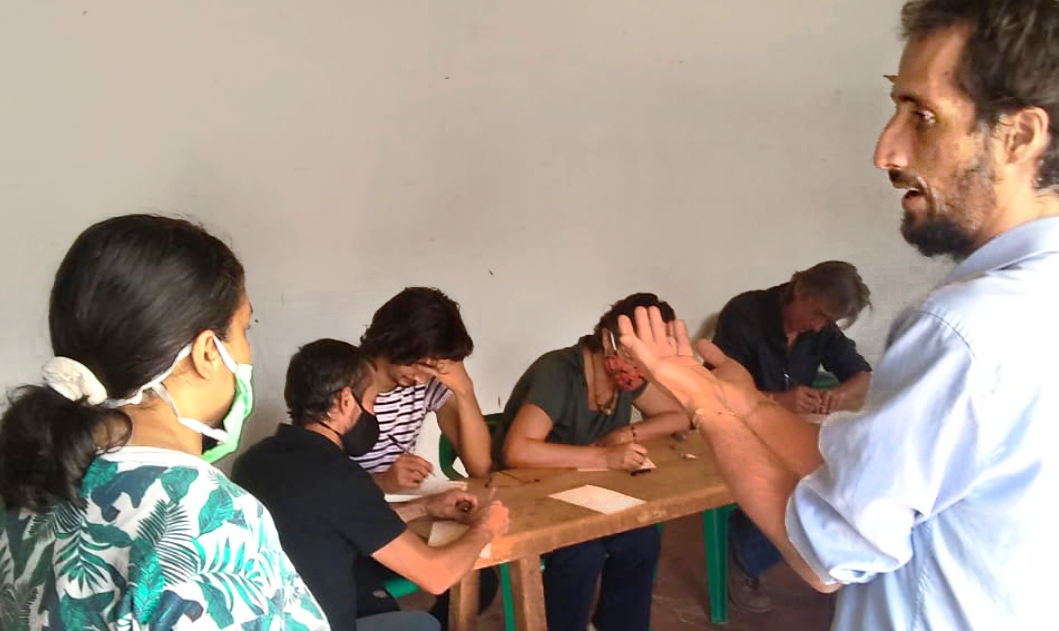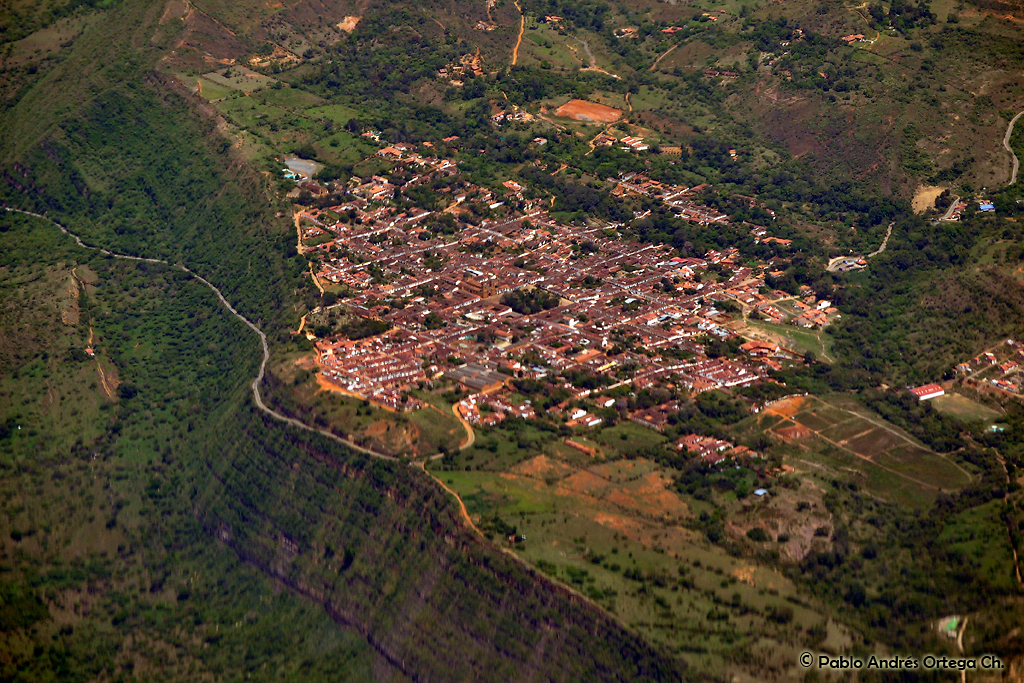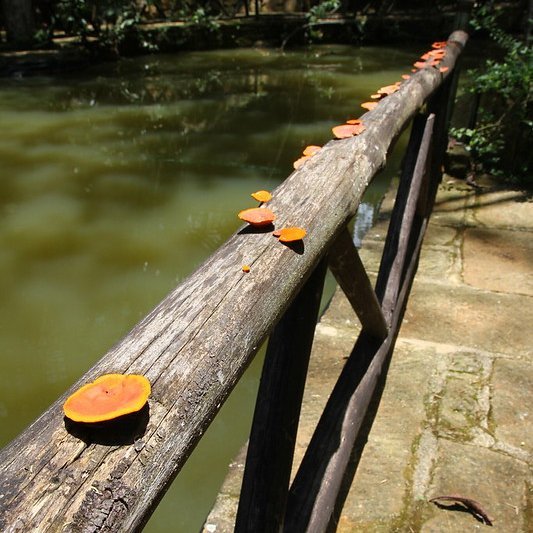Mediator, Colombia
Daniela Medina Poch is a-born-in-Colombia, based-in-Berlin visual artist who likes to research and write. She is currently part of the Art in Context MA program at UdK through which she came to learn about the New Patrons Protocol, whose methodology resonates strongly with her practice.
In June 2020, together with local mediator and specialist Felipe Medina and an intergenerational group of 11 people, she sowed the seeds for a commission in Barichara, Colombia. Since then, she has been engaged in thinking with the Protocol, especially interested in the translations of the protocol into new situations it could embrace in order to enable endogenous commissions, or, to trigger a shift from old patrons to new patterns.
For Commissioned by – Art in Relation, international mediators reflected on the significance of the New Patrons Protocol for their work: The Protocol can in principle be put into practice anywhere in the world, as it does nothing more than describe a way in which people can work together. All decisions are made locally by independent actors. Moreover, the protocol enables not only contemporary art projects, but also scientific research commissions, as well as theatre productions, music, architecture, and much more.
But how universal is the protocol, which emerged in European contexts against the background of a French cultural policy around 1989, really? How is it interpreted and possibly adapted not only in different regions of Europe, but also in Cameroon, Colombia, Lebanon and Tunisia? How do different historical, cultural and political backgrounds change the perspectives of art on behalf of citizens and the concrete work of mediators? Can they recommend that the protocol be taken up in societies where it has not yet played a role?
The Mediators have reflected on these questions and their texts are now published in this series.
In a recent seminar guided by New Patrons Germany’s director, Alexander Koch, we debated whether the New Patrons should aim to become an international institution or rather a movement with multiple smaller or larger independent organizational structures. This question is fundamental when envisioning the future of the New Patrons Protocol. I am personally more interested in the second option: Projects following the New Patrons Protocol as a planetary movement, with its own life and its own possibility of mutating and being integrated. As a movement, they recognize their context of origin but they are also able to delink from it.
It is worth recalling that universality has been a historical tool used to hegemonize certain logics, narratives and hierarchies, reinforcing their perception as objective, natural and therefore unquestionable. Instead I like to think of pluriversality, or as the Mexican Zapatistas declared 27 years ago, “El mundo que queremos es uno donde quepan muchos mundos.” (The world we want is a world in which many worlds fit) 1. Within this vision, there is no hegemonic truth, no objectivity, nor any history; there are rather truths, subjectivities, and histories, all non-hegemonic and plural.
Any movement that aims to become planetary should look upon itself and ask whether it allows other worlds within, and whether the structure can adapt to the local needs, visions and specificities of the places it aims to reach. At the same time, anything that aims to become planetary should also be aware of where and under which conditions and circumstances it emerged.
The New Patrons Protocol emerged in France in the early nineties, while François Mitterrand served as President, and just after the Berlin wall was torn down. Some of these factors, among others, might have provoked Belgian photographer and artist Francois Hers to imagine an art of democracy, an art that would be reinserted back into society – a significant power shift which 30 years later makes many of our hearts beat in resonance with it.
Now the concepts of art, civil society and democracy do not have the same connotations in France, Germany or Colombia, and in the process of activating The New Patrons Protocol in other locations, these local articulations should certainly be acknowledged and embraced. For instance, in Colombia, due to distrust in the public realm, the notion of citizenship is not a substantial form of collectivity. Networks of affection, comunidades and cooperatives, amongst other expressions of assemblage are rather more present. A regional translation of the Protocol could acknowledge these differences in the articulation of commission groups, when asking for financial support and also when understanding how consensus and dissension function locally.
If we were to understand the Protocol as a movement, maybe we can also conceive it as an open source methodology. As such, there might be less control over it... but wouldn’t this be interesting in some ways? Interpreting the Protocol as a movement and as an open source methodology will probably trigger local agencies and context-specific criteria, basic principles for local processes which are able to respond in resonance to site-specific opportunities and challenges. Furthermore, the appropriation, internalization and possible reinterpretation of the Protocol as a methodology would keep the Protocol alive and resonating, thus enabling various forms of visibility and perhaps activating unexpected funding sources – as well as potential organic and rhizomatic spread of New Patrons’ processes.
A symbolic separation from a blueprint would potentially mean that the Protocol is no longer “exported” but rather “activated” in different contexts. These activations are not derivatives of “an original” but are original in their own specificities. This would be a way to give the Protocol more relevance as an approach, methodology or mindset rather than as an institution. Furthermore, this would enable a horizontal dialogue amongst the activations of the Protocol – an exchange which would certainly nourish the networks.
As an institution, the New Patrons is able to gather initiatives together, articulate them and bring them to a broader planetary conversation. This can be strategic in terms of visibility and when requesting funding. In this regard, there is an interesting opportunity for The Protocol to contribute in the redistribution of privileges and opportunities, a necessary labor in an unjust planet. Nevertheless, patronizing approaches should be avoided. Instead, if the Protocol aims to trigger a planetary power redistribution, accessibility in combination with a local sense of agency are fundamental.
Additionally, another question to examine is the possibility to reframe the role of artists in the commissions and examine in which contexts it should be framed as an art project and in which others as a social project. So far the artist, who usually comes from abroad, is in charge of finding an unconventional way to tackle the commission. This is a brilliant opportunity for artists to work directly with communities. The artist listens and negotiates with the community, and in many ways the community decides which artist they need, but, generally, the artist has the last word. Which other roles and forms of artistic interventions can we envision? Under what circumstances should the main goal be making contemporary art accessible and when should it be using art as a tool for social change? Concomitentes, the New Patrons programme in Spain, is framed as a social project that will eventually be led by civilians, for example. Also, in Cameroon for the commission Liberté pygmée in Bifolone the community itself developed the artistic intervention. This opened the possibility to something that wasn't conceived before.
At last, I think the Protocol can become planetary through processes such as the framework of this publication: open dialogues to tackle and be receptive to possibilities, frictions and critiques. This porousness is a way to address its potential blind spots and contemplate options. Porousness is a way of being democratic (by allowing for dissention) and it is a way of being receptive to its variations. It is important to clarify that these explorations do not intend to invalidate or exclude the current and past approaches - rather they are part of an attempt to expand the present possibilities and unveil commission frameworks in which many worlds are able to coexist.
1 Enlace Zapatista. FOURTH DECLARATION OF THE LACANDONA JUNGLE, 1st. January 1996, see https://enlacezapatista.ezln.org.mx/1996/01/01/cuarta-declaracion-de-la-selva-lacandona/


